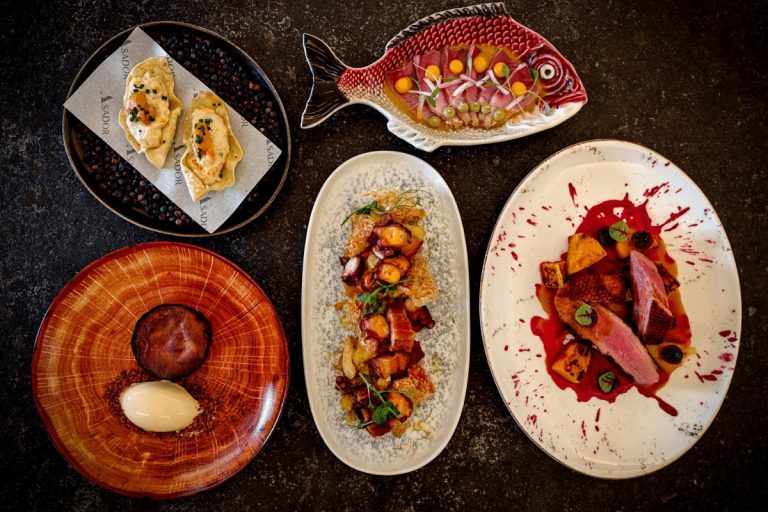The Ultimate Dining Experience: Crafting Flavour Through Smoke

Dining out isn’t just about eating; it’s about the experience—the ambience, aromas, and especially, the distinctive flavours that linger in your memory long after the meal is over. Among the most memorable culinary experiences is a meal carefully prepared with smoke. From succulent meats to vegetables infused with subtle aromatic hints, the craft of cooking with smoke is reshaping modern dining into a multisensory adventure. For those craving an immersive culinary experience, a visit to a restaurant Darlinghurst known for its expertly smoked dishes offers a perfect blend of flavor, ambiance, and innovation.
Unlocking Layers Of Flavour
The secret behind smoked dishes lies in how the smoke interacts with ingredients. Chefs meticulously manage variables such as temperature, type of wood, and cooking duration to elevate even simple dishes into complex culinary masterpieces. Each wood type—applewood, mesquite, cherry, and oak—infuses a dish with distinct notes. Applewood imparts sweetness, which is ideal for pork and poultry. Mesquite brings bold intensity, complementing hearty beef briskets or ribs. Cherry and oak offer balanced, subtle undertones perfect for delicate meats, seafood, or vegetables.
Careful management of heat, typically maintained at lower temperatures, ensures ingredients remain tender and absorb smoky flavours deeply and evenly. The cooking process is often lengthy—hours of patient oversight—but the results justify the effort: dishes emerge from the smoke beautifully tender, infused with flavours impossible to replicate with standard cooking methods.
Artistry Meets Technique
Crafting flavour through smoke is as much art as it is science. Experienced chefs understand the nuances of pairing spices, rubs, and marinades with specific woods. A carefully selected dry rub forms a caramelised crust known as bark, a textural and flavour element highly prized by culinary enthusiasts. Seasonings like smoked paprika, cumin, brown sugar, garlic, and black pepper create harmonious blends that complement the smoke, amplifying its subtlety rather than overshadowing it.
The artistry continues in precise timing. Over-smoking can overwhelm dishes with bitterness; too little smoke can render dishes bland. Master chefs, therefore, vigilantly monitor the process, regularly adjusting airflow, temperature, and even moisture within the cooking chamber. It’s this mindful precision that transforms mere cooking into an extraordinary culinary performance.
Beyond The Meats: Smoked Vegetables And Cheeses
Though smoked meats garner much attention, innovative chefs increasingly extend their smoking techniques to vegetables, fruits, and cheeses. Vegetables such as eggplant, peppers, cauliflower, and sweet potatoes become culinary revelations when gently smoked, acquiring a pleasant earthy complexity. Smoked cheeses gain depth and sophisticated profiles, making them superb additions to charcuterie boards or as standalone gourmet appetisers.
Even fruits benefit from this smoky renaissance. Smoked peaches or pears lend themselves perfectly to desserts, providing layers of depth beyond simple sweetness. Paired with spices, ice cream, or rich custards, these smoked fruits turn desserts into memorable finales.
Enhancing The Dining Ambience
The allure of smoke-cooked dishes transcends taste alone. Aromatic, inviting scents emanating from kitchens heighten the dining ambience, tantalising the senses even before plates arrive at the Table. Many dining establishments embrace this sensory aspect, featuring open kitchens or cooking stations where diners can witness the meticulous smoking process firsthand. Watching chefs skillfully handle food amid wafts of aromatic smoke amplifies anticipation and enriches the overall dining experience.
Pairing Smoked Flavours With Beverages
Expert sommeliers and mixologists have also begun embracing smoked foods, thoughtfully crafting beverage pairings to complement these intense flavours. Sturdy red wines that emphasise smoked meat or pork include zinfandel and cabernet sauvignon. Alternatively, crisp, acidic white wines perfectly accompany smoked poultry or seafood, refreshing the palate between flavourful bites.
Innovative cocktail pairings featuring smoky whiskies, mezcal, or craft beers can also amplify smoky meals, creating cohesive flavour experiences diners remember long after the meal concludes.
A Memorable Culinary Journey
Ultimately, the mastery of smoke-infused cooking provides an unparalleled dining experience. It merges tradition with innovation, aroma with taste, and precision with creativity. Restaurants that specialise in smoked cuisine recognise that the true essence of a remarkable meal transcends mere sustenance; it engages all senses, leaving diners not merely satisfied but thoroughly captivated.
As culinary artists continue perfecting their craft, diners can expect increasingly innovative creations, each infused with signature smoky touches. Such dining experiences linger long after the final bite, forever reshaping the way we view—and taste—the endless possibilities of flavour.




